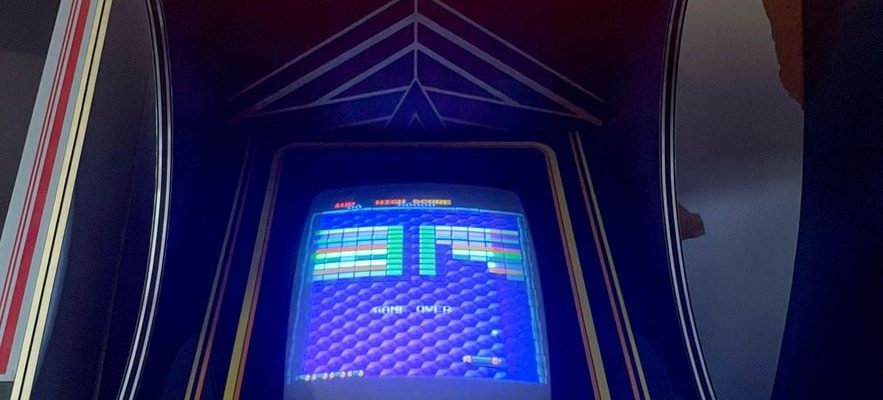Their golden age stretched over three decades, from the end of 1960 to the end of 1990. But, from the 1950s, coin-operated automatic games appeared in cafes. The operators then approach drinking establishments in France to install pinball machines and table football, and share the profits with the boss. Very quickly, these luminous and noisy machines embodying a new form of sociability seduced the youth, particularly those of the “gangs” and the “black jackets”, perceived as turbulent, idle, even deviant. When France, in full growth, enters the consumer society, the phenomenon amplifies. With their own references, many from across the Atlantic, young people now constitute a social group in their own right. The yéyés dance around the jukebox, a newcomer to the bistro. The baby finds its final form, which is still in short supply today among manufacturers. Pinball innovates to enter the electromechanical era.
At the Monnaie de Paris, until June 30, it’s as if we were there. A dive into the excitement of those years with, against a backdrop of decor reminiscent of cafes and arcades, the famous coin-operated entertainment machines. To encourage visitor immersion, the museum did not hesitate to publish, in its factory in Pessac (Gironde), specific tokens that everyone receives at the entrance to the exhibition to be able to activate the games, all functional, in the real conditions of the time.
Noise, fury, excitement, discovery, or nostalgia for some, are therefore part of the visit, which in the background questions the value and use of money – mainly pocket money – among this mainly adolescent audience. The course Insert Corner, as the curators of the exhibition Nicolas Galiffi and Jean-Baptiste Clais, two pop-culture specialists, have named it, neglects no detail, from the price of the baguette or the cinema ticket, decade after decade. Do we remember that, in the 1980s, the metro ticket cost 3 francs, a little more expensive than a game of video game (2 francs)?
Faced with competition from Pong, soon followed by Space Invaders, emerging during the 1970s, pinball manufacturers introduced electronics into their machines, borrowing in passing the themes popular in children’s literature or on the big screen: science fiction, space universe, western… Arcade rooms are installed almost everywhere to offer enthusiasts a greater diversity of games. The frantic race for innovation continued over the following decade, which saw the technical and graphic improvement of machines, the spread of standardized terminals and the arrival of Pac-Man, which will embody for years the players’ craze for the high score : spending hours trying to beat the current record, foreshadowing what would later be called e-sport.
“Arkanoid” (arcade maid), 1986.
/ © Brussels Pinball Museum © Monnaie de Paris
End of the game with the advent of digital technology which will reshuffle the cards of collective entertainment, the gradual arrival of the Internet, portable consoles and smartphones gradually transforming practices: the game becomes individual, the counter loses its place as an essential place where we meet and have fun. And even if, at the end of the 2000s, the geeks populating the start-ups brought pinball machines and other table footballs which had become outdated into fashion, they remained confined to the company or at home: no more coins , place at free to playfreely accessible in the office or at home.
